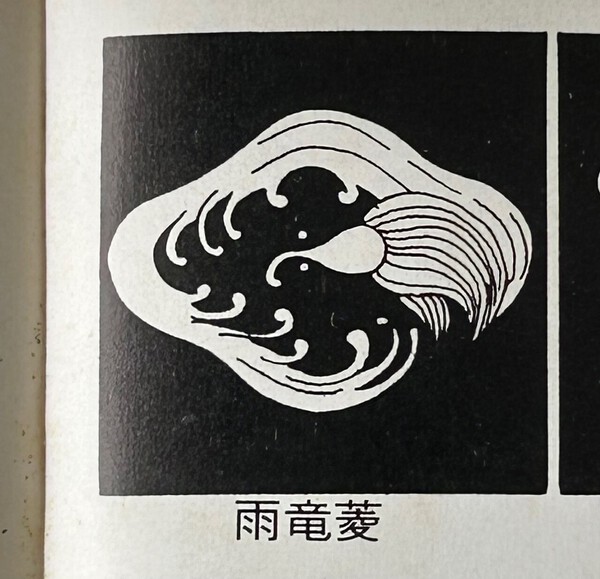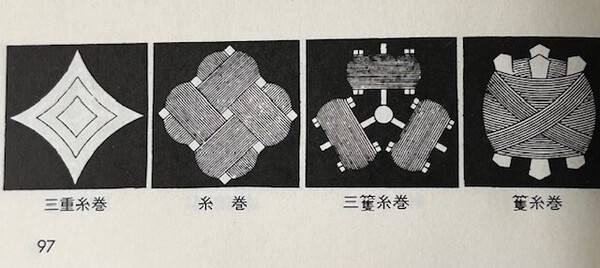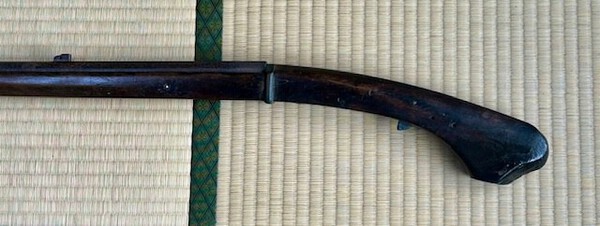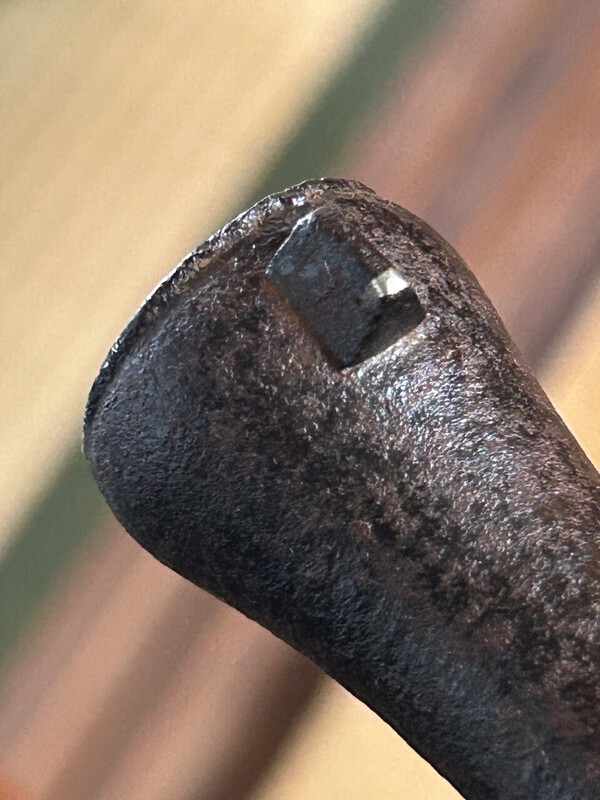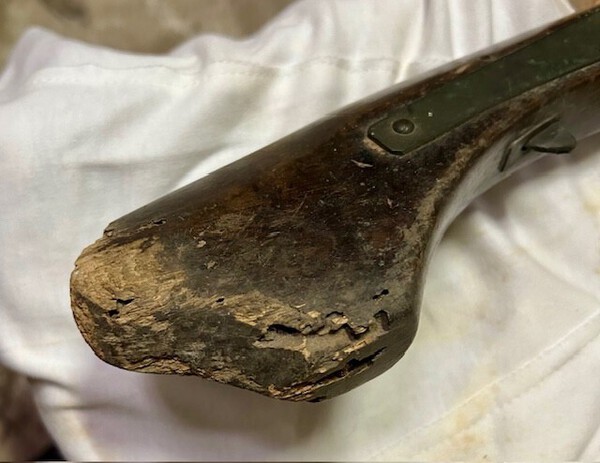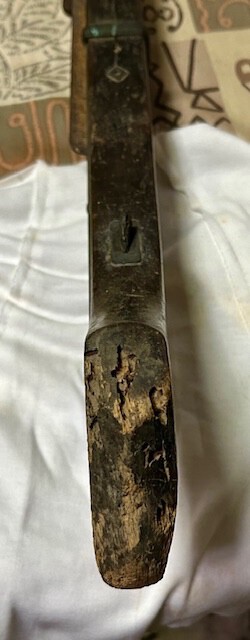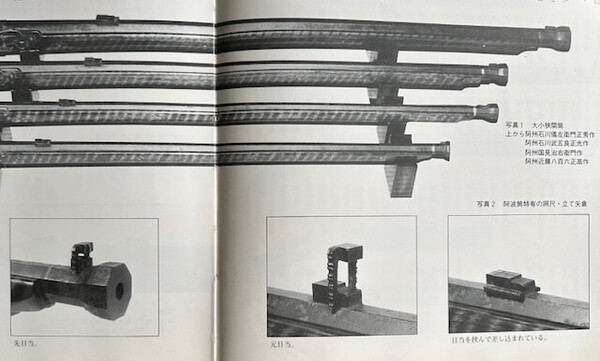-
Posts
14,072 -
Joined
-
Last visited
-
Days Won
260
Content Type
Profiles
Forums
Events
Store
Downloads
Gallery
Everything posted by Bugyotsuji
-
Some years ago I bought a simple bone Netsuke but I was never sure why the design was the way it was. Some kind of rain dragon design, sure, but… Today while searching through Mon books for something else, I suddenly spotted a Mon/Kamon that fitted the bill. Two pieces of the puzzle. A The offending object B the Kamon Ama-ryu-bishi 雨竜菱
-
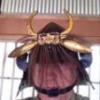
Which would you get? Mei or Mumei
Bugyotsuji replied to RichardY's topic in General Nihonto Related Discussion
Which one do you like, and why? -
Pronounced “Yún Qióng”, according to my Chinese dictionary.
-

Itomaki Gata, (Vertical Spindle Shape Tsuba), Historical Examples ???
Bugyotsuji replied to Barrett Hiebert's topic in Tosogu
-
Could it be 雲窮 ? Unkyū, a spiritual sense engendered when the top of a (certain) mountain is hidden in clouds.
-

Edo Period Corner Part II
Bugyotsuji replied to estcrh's topic in General Nihonto Related Discussion
Step 2. Strip it back to expose the wood putty again, shape and restain. Definitely getting there, but still rougher than I’d like. You often find guns like this, stood upright on an earthen storehouse floor for 150 years or more. The hard wood of the butt will have borne relentless attacks by insect and damp. -
Hi Rick, glad we are hitting the sweet spot. Some back sights did have fitting parts, but the majority did not. The variation of number 3 above looks as if it did, slide and stand, like the sights of Awa guns. Mostly they were decorative, indicating different regions or schools. Osaka and Choshu guns for example had a Mt Fuji (or half Fuji) rear sight, like No.4. Most of the grooves, or ridges, were simply lines of sight. Bizen used a blob of silver on the front sight to help draw the eye. Vertical holes were for short sticks of burning incense, for night sighting, it is said. So yours are both box type front and rear, with a valley split? Someone told me two slits is an older type, but I have not been able to corroborate that.
-
The owner, or a dealer, has added in pencil the opinion that this is a Momoyama period Seki blade. (Normally official registration paperwork does not record such things.) PS The date of the torokusho itself is Shōwa 52.
- 1 reply
-
- 4
-

-

-
Tetsu sabi ji nuri.
-

Edo Period Corner Part II
Bugyotsuji replied to estcrh's topic in General Nihonto Related Discussion
When I said Mañana, you guessed it, I meant never. But today I picked it up and started reducing the butt, filing it smooth, and forming sharper edges to the curves. Why? My hands seem to be following the original artisan. Who is directing this? -

Edo Period Corner Part II
Bugyotsuji replied to estcrh's topic in General Nihonto Related Discussion
Spot of silver inlay on front sight. Although Bizen guns used mostly iron for their locks and general metalwork, they also inlaid here and there in silver. Note the Rakkyo-gata (pickled-onion) shaped muzzle. -

Edo Period Corner Part II
Bugyotsuji replied to estcrh's topic in General Nihonto Related Discussion
Well, you could say that if you have a blade in shirasaya, and you adapt an old Koshiraé to take your blade, then why not? By the same token, perhaps it is not so very strange to find another stock and reshape it to fit a lonely barrel, especially if they are both clearly from the same rough time and location. Give a semblance of new life to each. Yes/no? (My next step would be to cut back the butt to a clean outline and smooth out the surfaces before re-staining. Mañana!) -

Edo Period Corner Part II
Bugyotsuji replied to estcrh's topic in General Nihonto Related Discussion
4/5ths complete. (Actually there would be hard work ahead, the devil being in the detail. The trigger does not even move, for example.) But we can see the main Bizen features already, the Fujioka-Ryū indentation on the butt, the iron lockwork, the ‘pickled-onion’ shaped muzzle, etc. Oh, the bisen breech screw moves now, and the barrel it is signed by a listed Bizen smith. -

Edo Period Corner Part II
Bugyotsuji replied to estcrh's topic in General Nihonto Related Discussion
In the meantime, the hybrid Bizen long gun has moved from 2/3rds to 4/5ths complete. I think I will leave it like this before it becomes a viable gun with working lockwork, and therefore requiring full registration. Part of the problem is that Bizen gun parts were largely fashioned in iron, so trying to recreate a rusty iron serpentine etc. for it might be a challenge. The butt was worm-eaten to hell, but I kind of reshaped it with wood putty. Not yet pretty, but better than it was. I have managed to reset the amaooi, fukikaeshi and kusabi wedge section, and fitted Mekugi pins and a ramrod. -

Edo Period Corner Part II
Bugyotsuji replied to estcrh's topic in General Nihonto Related Discussion
To be fair to the dear readers of this thread, it should be noted that the one guy sold all three of his golden-barrel guns on Tuesday. Someone made him an offer and he accepted. They will be sold on surely at double the price, and their new owners will be proud to show them off. And I am free! (Now, about the other one… the one with the notation warding off barbarians… hmmmmmm…) -
文明七年二月日 Bunmei 7 a day in February
-
Rick that sounds like a great idea. I have removed bisen screws in the past with some kind of black sealant around them, as if someone had had a similar thought. To extrapolate a little, it may have been the fact that the guns on Western ships approaching Japan's shores had so much greater range. Japanese cannons needed to be sealed more efficiently, so the barrels were filled with seawater to rust-seal the breech plugs. As a spin-off from this, or in conjunction with this, infantry guns began to be made with even finer tolerances to gain extra bang and range, (vent channels became so small that only a fine cleaning wire could work through) and troops were encouraged never to remove the bisen screw when cleaning their guns, i.e. to deliberately allow a build-up of grunge around the screw. Personally I wind a section of kitchen paper towel two or three turns around mine after every clean to make for a tight fit to the right position. PS What you say about European gun threads is interesting for me as I have a pistol with an uncharacteristically short bisen screw. The screw is stuck so tight that I have given up on opening it, but I was wondering if such a short screw could even be practical, to the point where I thought the gun could be a fake. It was only when I finally managed to clean out the vent hole, (yessss, fantastic, it does have a viable fire channel!) that I became convinced that this gun was/is the real McCoy. You have opened the possibility in my mind that the gunsmith used a Western technique in the manufacture of this matchlock pistol.
-
And these are from Sawada San’s book, showing how the Awa long guns’ front and rear sights could be adjusted up and down.
-
Is this the illustration you saw, Rick? From Sugawa Shigeo’s ‘The Japanese Matchlock’. These are not replaceable, but just examples of styles.
-
Ah, the added information begins to fill in the picture. Long guns from Awa had adjustable sights front and rear, although most of them have lost the sliding, fold-up part. Adjustable sights of any kind were very much the exception, and fully working ones not often found today. There is a guy called Sawada Taira, author of ‘Nihon no Furujū’, who proudly shows people his ladder sight, which has its own separate box. An extremely rare object. I am guessing you’d like photos of the above, or would you also be interested in normal, fixed-in-place rear sights? Am I correct in assuming that yours is missing, and there is a shallow box where it should be? Or is yours like 99% +/- of Tanegashima which have fixed rear and front sights?
-
As a swordsmith, this name was read Kaneaki, as Moriyama San says above. (My suggestions were general readings, but stupidly I did not crosscheck with the Meikan when I first posted.)
-
Try Kanemi or Kaneharu, Rodriguez. (Edited. But see Moriyama San below.)
-
短刀 氏信岩捲 (TA-030111)|刀・日本刀の販売なら日本刀専門店の【銀座 誠友堂】 - 氏信岩捲 Ujinobu Ganmaku - 日本刀の通信販売 明倫産業株式会社 日本刀販売専門店銀座長州屋|刀 銘 氏信岩捲(業物)|刀剣の専門誌『銀座情報』の名刀 Check these out, Kevin. (There is a little information in English to get you started.)
-
If it has been glued in place, I would leave it and move on. Could be deliberate for whatever reason.
-
By the way, if you have any zōgan inlay along the top of the barrel which you do not wish to damage, application of heat becomes more problematical. Wrapping that section in a wet towel can help keep the temperature down, …if your soft metal inlay is not too close to the base of the barrel.



